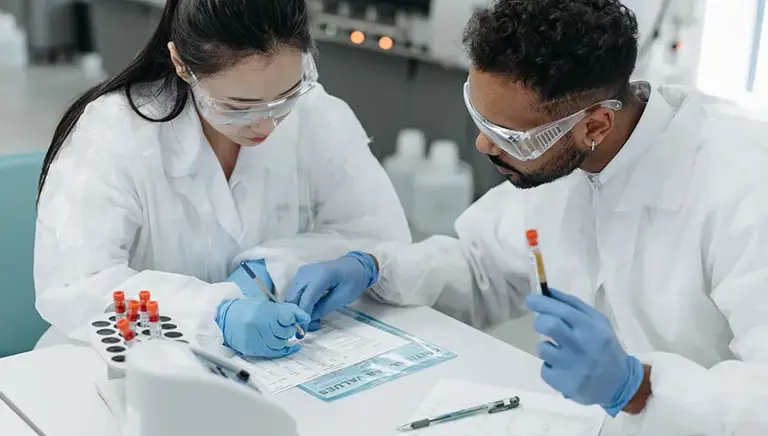Latest economic data underlines risk of disincentivising UK life sciences growth
The government has published the latest economic data for UK’s life sciences sector for the year 2021/22 showing strong growth in both jobs and sector turnover across the years of the Covid-19 pandemic.
The Bioscience and health technology sector statistics 2021 to 2022 show continued positive year-on-year growth in the number of businesses (6,850), sites (7,910), employment (304,200 people) and turnover (£108.1bn) across the life sciences industry, and the biopharmaceutical sector specifically [1].
However, the data published today covers the years of the Covid-19 pandemic, and also do not capture the period of historically high and internationally uncompetitive medicine rebate rates in the UK, which under the Voluntary Scheme (VPAS) rose form 5.1% in 2021 to 15% in 2022 and 26.5% in 2023.
Next year, the government intends to impose a 21.9% rebate rate in the statutory scheme, while the newly agreed Voluntary Scheme for Branded Medicines Pricing, Access and Growth (VPAG) will see rates starting at 19.5%, though projected by the ABPI to fall to 7.2% for newer products by 2028.
The UK’s rebate rates are significantly higher than other similar mechanisms operated by other countries - for example, 12% in Germany (and under review for future years), 7.5% in Spain and 8.25% in Ireland.
The pharmaceutical industry has consistently warned that such high and uncompetitive rates are already impacting UK investment and headcount and will continue to do so until rebate rates start to actually decline.
Richard Torbett, Chief Executive of the ABPI said: “It is great to see that UK life sciences continued to provide new high-quality jobs and strong economic growth to the UK. While the pandemic was an unprecedented event, the positive tread is clear even before this, and we continue to believe our sector has untapped potential to do more for the UK.
“This data speaks to the high potential of a science and innovation led economy to create jobs and growth. This is why we have been so concerned about the impact of high rebate rates in recent years, as it puts at risk the UK’s record of science-driven growth.”
Key points from the report:
- The number of life sciences businesses operating in the UK has increased gradually since the 2008/09 financial year (when data collation began), reaching a total of 6,850 in 2021/22. These businesses had a total of 7,910 sites in the UK, a 1% increase compared to 2020/21.
- There were 304,200 people employed in the UK life sciences sector in 2021/22, a relative increase of 5% compared to 2020/21. Aside from a small decrease in 2018/19, employment in life sciences in the UK has seen a continuous upward trend between 2011/12 and 2021/22.
- In 2021/22 there were 70,000 people employed in the core biopharmaceutical sector, and a further 79,991 in companies which service or supply the sector.
- Businesses in the UK life sciences industry generated £108.1 billion in turnover in 2021/22, a 13% increase from the turnover value of £95.9 billion (in 2021/22 prices) in 2020/21. Turnover has seen an upward trend since 2014/15, with the largest annual increase (in both absolute and relative terms) occurring between 2020/21 and 2021/22.
- The core biopharmaceutical sector generated £46.7 billion in turnover in 2021/22, accounting for 43% of the life sciences industry total, surpassing the previous turnover peak reached in 2010/11.
- There are four sectors operating within the life sciences industry (biopharmaceutical core, biopharmaceutical service and supply, medical technology core and medical technology service and supply). The sector with the highest proportion of sites and employment was the medical technology core sector, accounting for 44% of sites and 39% of employment in 2021/22. This sector has continuously accounted for the highest proportion of sites and employment between 2008/09 and 2021/22.
- The sector that generated the highest turnover in 2021/22 was the biopharmaceutical core sector, accounting for 43% of the total turnover generated across the life sciences industry. This was followed by the biopharmaceutical service and supply sector and medical technology core sector which each accounted for a share of 25% of turnover in 2021/22.
- The South East continues to be the UK region with the highest share of both life sciences industry employment and turnover, accounting for 23% of total employment and 30% of total turnover in 2021/22.
- Economy and Industry
- Innovation
- Life Sciences
- Manufacturing
- Research and Development
- Science and innovation
- Statistics
- Statutory Scheme
- Voluntary Scheme
Last modified: 07 December 2023
Last reviewed: 07 December 2023

